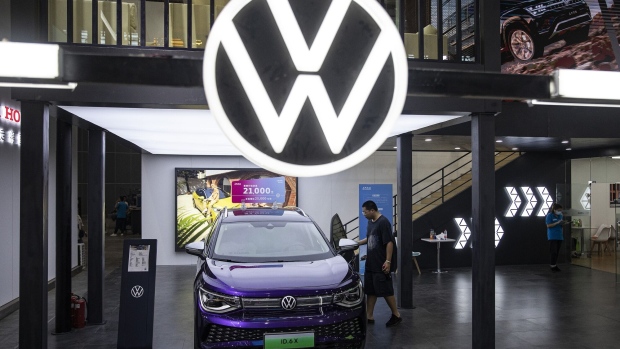Apr 4, 2023
China Slowly Squeezes Global Carmakers Out of Its Massive Market
, Bloomberg News

(Bloomberg) -- Legacy automakers have been sounding optimistic lately about vehicle sales in China heading higher following the great reopening. Volkswagen boss Oliver Blume seemed to come away bullish from his visit in February, and others like BMW have offered similarly positive sentiment.
That near-term swagger hides an uncomfortable point for established automakers: Many of them are slowly but steadily getting squeezed out of the Chinese auto market.
International legacy automakers have watched their share of the market shrink from 61% in 2020 to 41% in the final quarter of last year. There should be a slight bounce back in the first half of this year, as these manufacturers clear out old inventory, but BloombergNEF expects their overall share this year to be well below 50%.
There’s quite a bit of variation between legacy automakers in terms of how well they’ve fared. Toyota’s sales in China have held up reasonably well, but its Japanese peers Nissan and Honda have seen big drops in the last few years. Premium brands have generally fared better than mass market ones.
The rise of electric vehicles is the most important factor upending the automotive pecking order in China. As I wrote last month, automotive product planning cycles are long, and many legacy automakers misjudged how fast the Chinese market was shifting to EVs.
International legacy automakers had just 8% of China’s plug-in vehicle market in the final quarter of last year, and many of their EV offerings are not competitive with local ones on price, range and features. Their share of the Chinese EV market has steadily declined as companies like BYD and Tesla took the initiative and local automakers launched a flurry of electric models.
Electrification has been fastest at the top and bottom of the Chinese auto market so the next phase of growth will have to come from the middle, where EV penetration is lower. This could bring further losses in market share for legacy automakers, unless they can quickly correct course.
Early sales data for 2023 shows this may already be playing out. Japanese brands were down 39% overall in January and February, while the Germans were down 21%. By contrast, BYD has already sold over 300,000 vehicles in that span, up more than 70%. Founder Wang Chuanfu said last week that the company aims to be China’s top-selling automaker by the end of the year.
Other factors are also at play. In-vehicle connectivity and software offerings are often stronger from Chinese brands and has been another point of differentiation. Chinese consumers tend to adopt new technologies faster than new-car buyers in Western markets, where the average buyer skews older.
Some of what’s happening has also been part of the Chinese government’s long-term goals for the sector for many years. Global automakers were required to produce vehicles with local joint-venture partners until very recently, a move that was designed to speed up transfer of technology and manufacturing know-how. Electrification is now creating a lane for them to leap ahead.
It’s hard to overstate just how important China’s rise has been for global automakers over the last several decades. Indeed, much of the growth in global vehicle sales in the last 20 years has come from the expansion of China’s middle class. There’s no other growth story like China on the horizon, and with dynamics shifting quickly there now, legacy automakers are being forced into the electric age. It’s not clear if all of them will make the jump successfully.
--With assistance from Siyi Mi and Danny Lee.
©2023 Bloomberg L.P.





